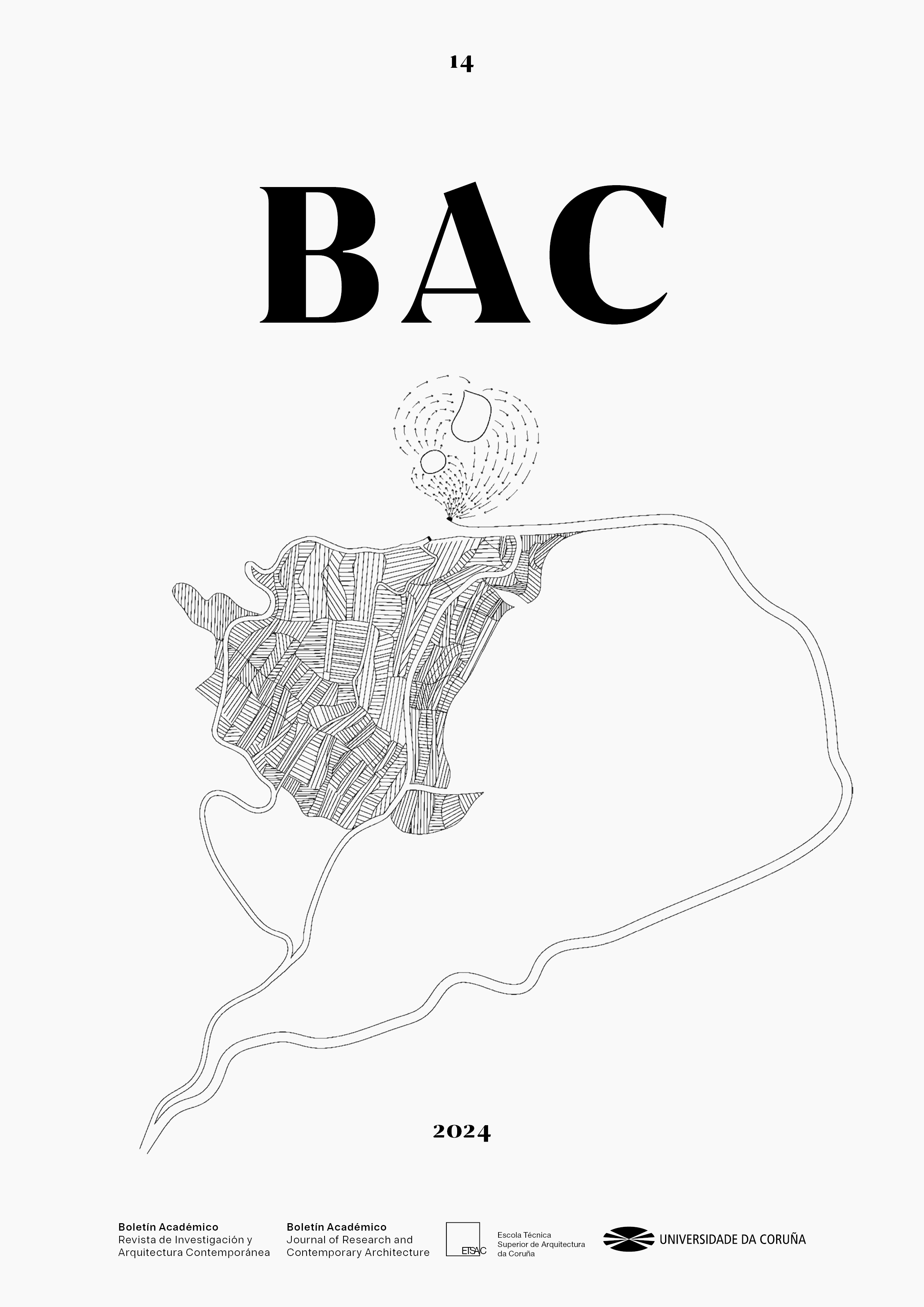Antonio Fernández Alba. Construcción de un oasis en el desierto
DOI:
https://doi.org/10.17979/bac.2024.14.10233Palabras clave:
paisaje, poblado, arquitectura, ruina, representaciónResumen
En su definición más simple, el paisaje del desierto responde al vacío y la inmensidad, siendo atributos antagónicos a los que define la naturaleza humana. El poblado para trabajadores de la central nuclear de Zorita, situado en la región desértica de la Alcarria, nos ofrece respuestas al problema de habitar y asentar de manera temporal a un grupo reducido de moradores en la infinidad del desierto. En este ensayo nos introducimos en la piel del arquitecto madrileño Antonio Fernández Alba para explorar desde la disciplina de la profesión las estrategias que utiliza en este proyecto, olvidado y deshabitado desde 2006, para conformar un lugar habitable en este tipo de paisaje. Una de las estrategias principales es la construcción de una suerte de oasis que contrasta social y climáticamente con el paisaje del desierto.
Descargas
Referencias
Arza Garaloces, Pablo. “L’Architecture d’Aujourd’hui, testigo del desarrollo moderno español (1950-1986)”. Bitácora Arquitectura 43 (2019): 12-25. DOI: https://doi.org/10.22201/fa.14058901p.2020.43.72947
Baudrillard, Jean. La guerre du Golfe n’a pas eu lieu. París: Editions Galilée, 1991.
Cela, Camilo José. Viaje a la Alcarria. Madrid: Destino, 1948.
Fernández Alba, Antonio. “Poblado de la central nuclear de Zorita”. Arquitectura 84 (1965): 19-21.
Fernández Alba, Antonio. “Poblado central nuclear de Zorita”. En Arquitectura española contemporánea, editado por Luis Domenech Girbau. Barcelona: Blume, 1968.
Fernández Alba, Antonio. Antonio Fernández Alba. Obras y proyectos (1957-1979). Madrid: Dirección General del Patrimonio Artístico, Archivos y Museos. Ministerio de Cultura, 1980.
Fernández Alba, Antonio. Antonio Fernández Alba, arquitecto. Madrid: Xarait Ediciones, 1981.
Fernández Alba, Antonio. “Desierto de espejos, donde los muertos dejan de existir”. Lápiz 77 (1991): 23.
Fernández Alba, Antonio. Antonio Fernández Alba. Premio Nacional de Arquitectura 2003: libro de fábricas y visiones recogido del imaginario de un arquitecto de fin de siglo, 1975-2010. Madrid: Ministerio de Fomento, 2011.
Fernández Alba, Antonio. Azules de otoño cerrado. Madrid: Ediciones Asimétricas, 2021.
Gonzalvo Salas, Carlos. “La arquitectura de las centrales nucleares de primera generación en España (1963 -1972)”. Tesis doctoral, Universitat Rovira i Virgili, 2022. http://hdl.handle.net/10803/675416
Le Corbusier. Vers une architecture. París: Éditions G. Crès et Cie, 1923.
Molina, Santiago. “Un rectángulo en el desierto.” Múltiples estrategias de arquitectura. Consultado el 13 de febrero, 2023. https://www.santiagodemolina.com/2023/02/un-rectangulo-en-el-desierto.html
Parent, Claude. “Habitations pour le personnel d’une centrale atomique à Zorita, Espagne”. L’Architecture d’Aujourd’hui 136 (1968).
Pizarro, Diana. “El sueño de recuperar un viejo poblado cercano a una antigua central nuclear”. Nueva Alcarria. Consultado el 5 de marzo, 2023. https://nuevaalcarria.com/articulos/el-sueno-de-recuperar-un-viejo-poblado-cercano-a-una-antigua-nuclear.
Sebastián, Javier. El ciclista de Chernóbil. Zaragoza: Institución Fernando el Católico, 2011.

